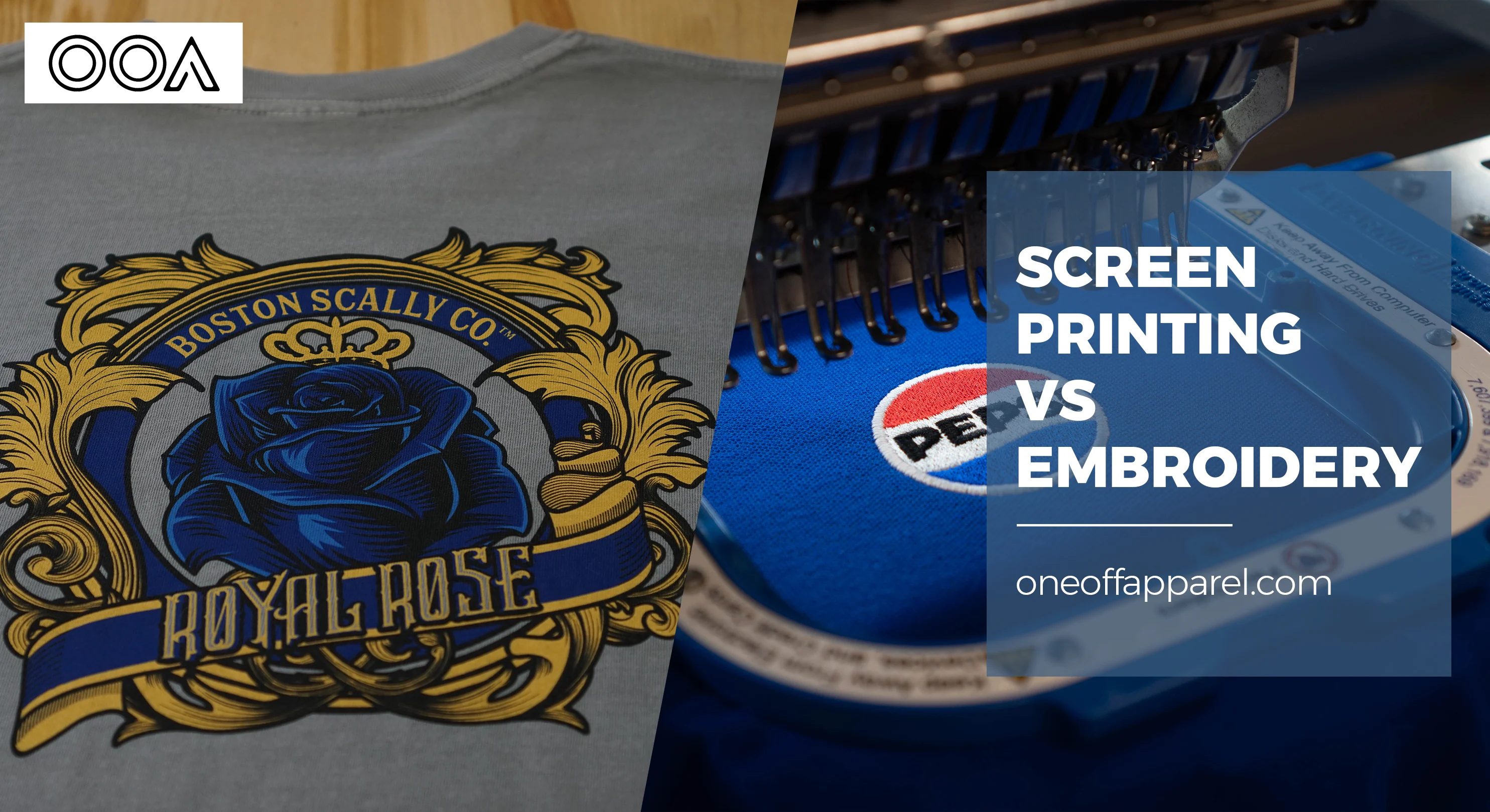
Custom apparel is critical in branding, team identity, and personal expression. Two methods dominate the conversation for businesses, organizations, or individuals looking to create unique garments: Screen printing vs Embroidery. Each technique offers distinct advantages depending on the project’s goals, fabric type, and design complexity. While One Off Apparel specializes in these services, this blog focuses on breaking down the technical, aesthetic, and practical differences to help you make informed decisions.
Understanding the Basics of Screen printing vs Embroidery
Screen printing methods involves transferring ink through a mesh stencil onto fabric, ideal for bold graphics and multicolor designs. Embroidery stitches thread directly into the material, creating textured, durable logos. Both methods have evolved with technology, but their core applications depend on factors like durability, cost, and fabric compatibility.
Durability and Longevity
Durability is a key consideration for workwear, uniforms, or frequently washed apparel.
- Embroidery: Known for resilience, embroidered designs withstand repeated washing and harsh conditions without fading. The thread integrates into the fabric, making it less prone to cracking—a trait highlighted in industries like healthcare and hospitality.
- Screen Printing: Lively, screen-printed designs can crack or fade over time, especially on stretchy fabrics. Because it suits better with casual wear but advances in ink formulas (e.g., plastisol) improve longevity.
Best for durability: screen printing for short-term or seasonal items; but custom embroidery for heavy-use garments
Design Complexity and Aesthetic Impact
Design goals heavily influence method selection:
- Screen Printing:
- More cost-effective for large runs with fewer colors, but additional colors increase cost due to extra screens.
- More casual, flexible, and versatile—ideal for bold, trendy, and artistic designs
- Embroidery:
- Best for logos, text, or minimalist patterns.
- Struggles with gradients or fine details due to thread limitations.
- Adds a tactile, premium feel, often preferred for polos, hats, and corporate wear.
Design tip: Use screen's printing for art-heavy projects and embroideries for professional, text-based branding.
Cost and Scalability
Budget and order size are practical deciding factors:
- Screen Printing:
- Lower per-unit costs for bulk orders (50+ pieces).
- Faster and more scalable for bulk orders.
- Setup fees apply for each color layer, making simple designs more cost-effective.
- Embroidery:
- Higher initial digitizing costs but economical for small batches.
- No color-layer fees, making multithread logos affordable for startups or small teams.
Rule of thumb: Screen printing suits large events or promotional campaigns; embroidery fits small teams or high-end branding.
Fabric and Garment Compatibility
Material type dictates method viability:
- Screen Printing: Works on most fabrics but excels on cotton. Avoid heavy textures like fleece, where ink adhesion falters.
- Embroidery: Requires stable, medium-weight fabrics (e.g., twill, denim) to prevent puckering. Thin materials like silk may tear under thread tension.
Pro tip: For lightweight or stretchy fabrics, consider heat-transfer vinyl as an alternative to embroidery.
Industrially Relevant Applications
- Workwear and Uniforms: Embroidery’s durability and polished look make it a staple for healthcare scrubs, chef coats, and corporate uniforms.
- Promotional Merchandise: Because of its color flexibility and scalability, screen printing dominates event T-shirts, sports jerseys, and giveaways.
- Fashion and Streetwear: Hybrid approaches (e.g., embroidered patches on screen-printed hoodies) blend texture with artistry.
Environmental and Maintenance Considerations
- Screen Printing: Water-based inks offer eco-friendly options, but plastisol relies on PVC. Post-wash care (inside-out, cold water) extends print life.
- Embroidery: Polyester or rayon threads are long-lasting but non-biodegradable. Garments require gentle washing to preserve stitch integrity.
Selecting between Screen printing vs Embroidery hinges on balancing durability, design needs, and budget. Screen Prints allow for bold and large-scale designs with vibrant results on casual wear. The timeless finish of embroidery remains unmatched for professional uniforms or logos meant to endure years of use. One Off Apparel, a brand that uses Screen Printing Techniques tailored for diverse needs, also ensuring every project aligns with the client’s vision and practical demands. Understand these methods as it will aid you in choosing the right approach to enhance your apparel’s impact—without any compromise on quality or authenticity.
Elevate your brand's presence with One Off Apparel exceptional screen printing services. Contact us today at (508) 835-8883 or email info@oneoffapparel.com to know more and start your project!
© Copyright All Rights Reserved

